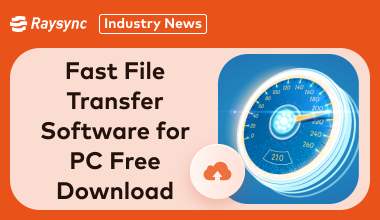Top 4 FTP Exploits Used Hackers and the Solutions
November 27, 2020
Enterprises rely on safe and reliable information access methods to meet today's rapidly developing market demand. Accordingly, sharing data internally and externally is essential for any organization.
FTP is one of the earliest and still used data sharing methods. Although IT teams and business users are familiar with this, FTP lacks much vital security, compliance, and workflow requirements in modern organizations, especially in data security.
The following are four different FTP vulnerabilities that are vulnerable to hackers:
1. Anonymous authentication
Anonymous authentication is an FTP vulnerability, which allows users to use FTP username or log in anonymously. In many cases, users will provide their email address as a password. However, the user's login credentials (username and password) and the commands used are unencrypted, visible, and easy to access. At the same time, any data sent via FTP or hosted on an anonymous FTP server will not be protected. Once, the FBI found that hackers actively used FTP to target medical and dental industries and access protected health information.
2. Directory traversal attack
A directory traversal attack exploits insufficient security validation or sanitization of user-supplied file names, such that characters representing "traverse to parent directory" are passed through to the operating system's file system API.
3. Cross-site scripting
Cross-site scripting is a type of security vulnerability that can be found in some web applications. XSS attacks enable attackers to inject client-side scripts into web pages viewed by other users. A cross-site scripting vulnerability may be used by attackers to bypass access controls such as the same-origin policy.
Attackers can use XXS to send malicious scripts to unsuspecting users. The end user's browser cannot know that the script is not trusted and execute the script. Because the malicious script thinks that the script comes from a trusted source, it can access any data, session token, or other sensitive information stored on the user's local terminal that is reserved by the browser and used with the site.
4. Malware attack based on Dridex
It was discovered for the first time in 2014 that Dridex malware has been re-invented and introduced in unexpected ways after the UK became the target of bank attacks. Internet users targeted by Dridex malware will open Word or Excel email attachments, which will cause macros to download the malware and infect computers, thus exposing users to bank theft. In the latest version of Dridex malware, hackers use FTP sites and credentials to avoid being detected by e-mail gateway and network policy of trusted FTP. Updating FTP credentials regularly can help prevent Dridex-based attacks.
As far as the FTP server itself is concerned, it can no longer meet the system functions required by the big data business in the information age. From the point of view of security, transfer efficiency, and compliance, the FTP server itself cannot be expanded and it is very likely to bring high-cost loss. In the big data market, managed file transfer (MFT) software came into being and was promised to meet the above business requirements.
Large file transfer technology provides higher control and security than FTP, which usually has the following features:
In-depth report (e.g., notification of completion of file transfer)
The global visibility of all data transfer activities
End-to-end security, encrypting data in transit and at rest
Performance indicators, monitoring, and support for compliance requirements
Workflow automation
Raysync - large file transfer software
- Data Synchronization
Supports two-way file synchronization that maintains the consistency of data across multiple devices, ensuring no redundant fragmented files are produced and multi-point data sync is efficient.
- Point-to-point Transfer
Adopts user ID to achieve point-to-point transfer, eliminating intermediate transfer for rapid file-sharing.
- Standard Bank-Level Encryption Technology
With the AES-256+SSL+Random salt high-density encryption algorithm, even the developers are unable to recover the root password through the stored ciphertext, making sure the data security is worry-free.
- Audit trails
Uses transfer logs and operations logs to supervise user behavior, easily trace all operations and file content, effectively control improper usage behavior and help enterprises to achieve better file management.
- User-defined Management
User-defined management perfectly plots out the organizational structure, supporting group management by defining regions, departments, and role-based permissions that set authority to standardize enterprise users' operation.
- Intelligence Nodes Management
With intelligence nodes management equipped, it supports unified management of all node machines in both the internal and external network environment to monitor and collect all operation logs and data synchronously.
- Hybrid Cloud Storage
Raysync supports more than 10 mainstream storage methods including hybrid storage effectively assisting enterprises to store, backup, migrate and synchronize their files in an orderly manner.
As a one-stop solution provider, Raysync has independently developed its core transfer technology with its professional technical teams to offer high-performance, secure, and reliable large file transfer and file management services for major enterprises.
You might also like

Industry news
December 24, 2025Eliminate manual backup risks with Raysync’s automated, encrypted file backup solution. Secure sensitive data with AES-256 encryption, blazing-fast transfers, and reliable, compliance-ready automation.

Industry news
November 27, 2024Find the best fast file transfer software for PC free download! Discover tools for blazing-fast transfers, secure backups, and seamless data migration for individuals and businesses.

Industry news
February 27, 2025Master rsync from remote to local via this guide. Our comprehensive 2025 guide provides step-by-step instructions and practical examples for seamless data synchronization.